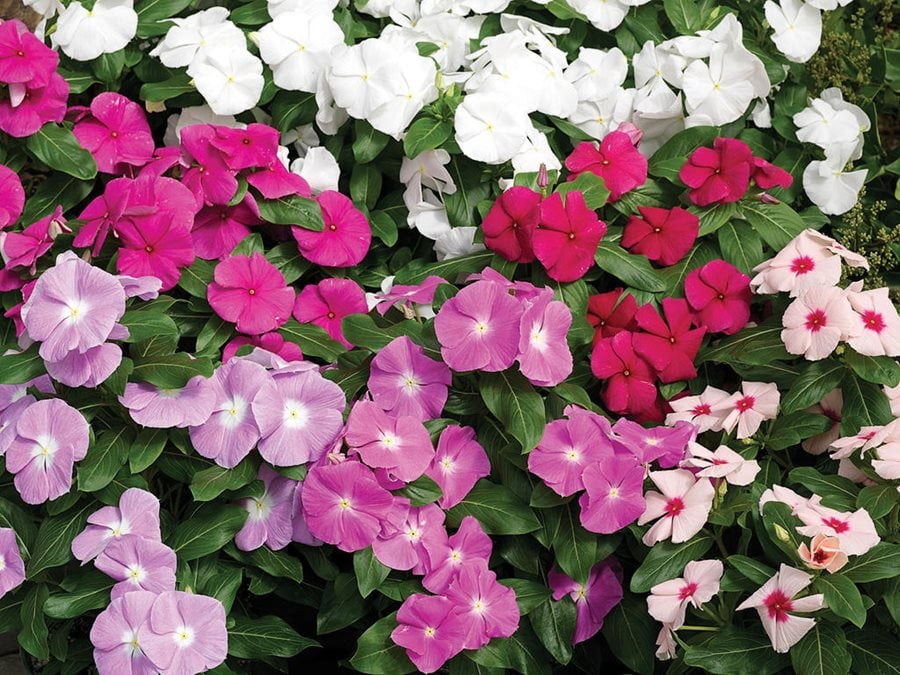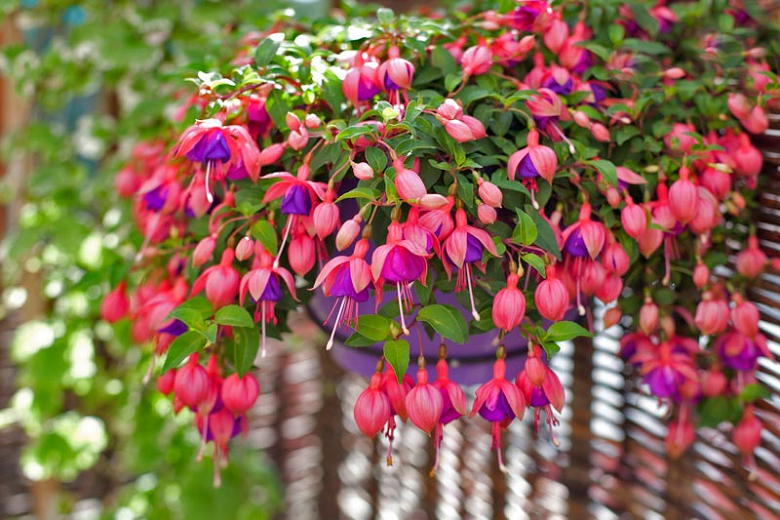Dipladenia Companion Plants That Will Make Your Garden Pop
Dipladenia Companion Plants That Will Make Your Garden POP
Dipladenia is a beautiful tropical plant that is known for its trumpet-shaped flowers and cascading foliage. It is a popular choice for container gardening, as it can be easily trained to grow on a trellis or in a hanging basket. Dipladenia is also relatively easy to care for, making it a good choice for beginner gardeners.
If you are planning to add dipladenia to your garden, you may be wondering what companion plants would work well with it. Here are a few suggestions:
- Annual Phlox: Annual phlox is a low-maintenance plant that produces bright, colorful flowers throughout the summer. It is a good choice for filling in the spaces around your dipladenia plant.
- Sweet Potato Vine: Sweet potato vine is a fast-growing, trailing plant that is known for its colorful foliage. It can be used to add a splash of color to your garden or to cover up unsightly areas.
- Bidens: Bidens is a hardy plant that produces small, daisy-like flowers. It is a good choice for attracting butterflies and other pollinators to your garden.
- Lantana: Lantana is a versatile plant that can be grown in sun or shade. It produces brightly colored flowers that bloom all summer long. Lantana is a good choice for attracting hummingbirds and other wildlife to your garden.
- Geraniums: Geraniums are classic garden plants that come in a variety of colors and sizes. They are easy to care for and can tolerate a variety of conditions. Geraniums are a good choice for adding color and interest to your garden.
- Coleus: Coleus is a colorful plant that is known for its brightly colored leaves. It is a good choice for adding a pop of color to your garden. Coleus can be grown in sun or shade and is relatively easy to care for.
- Vinca: Vinca is a low-maintenance groundcover plant that produces blue, purple, or white flowers. It is a good choice for filling in the spaces between your other plants.

- Fuchsia: Fuchsia is a beautiful flowering plant that is known for its delicate, bell-shaped flowers. It is a good choice for adding a touch of elegance to your garden. Fuchsias can be grown in sun or shade and need regular watering.

When choosing companion plants for your dipladenia, it is important to consider the plant's needs in terms of sunlight, water, and soil type. You should also consider the plant's mature size, as you don't want to plant two plants that will eventually outgrow their space.
With a little planning, you can create a beautiful and vibrant garden with dipladenia and its companion plants.
Conclusion
Dipladenia is a beautiful and versatile plant that can be used to add color and interest to any garden. By choosing the right companion plants, you can create a stunning display that will last all summer long.
Here are a few additional tips for growing dipladenia:
- Plant dipladenia in full sun or partial shade.
- Water dipladenia regularly, especially during hot, dry weather.
- Fertilize dipladenia with a balanced fertilizer once a month during the growing season.
- Protect dipladenia from frost in cold winter climates.
With proper care, dipladenia will thrive and bloom for many years to come.
Dipladenias are beautiful, flowering plants that can add a touch of tropical flair to any garden. But did you know that choosing the right companion plants can help your dipladenia thrive?
Some good companion plants for dipladenias include:
- Blue star creeper: This low-growing vine has bright blue flowers that will complement the dipladenia's blooms.
- Muhly grass: This grass has airy, feathery plumes that will add height and interest to your garden.
- Chrysanthemum: These cheerful flowers come in a variety of colors and will bloom all fall long.
For more information about dipladenia companion plants, visit Gardenia Inspiration. This website has a comprehensive list of plants that can be grown alongside dipladenias, as well as tips on how to choose the right plants for your specific climate and needs.
FAQ of dipladenia companion plants
- What are some good companion plants for dipladenia?
Dipladenia is a tropical plant that thrives in full sun and moist, well-drained soil. It is not frost-tolerant, so if you live in a cold climate, it is best to consider it an annual or bring it indoors as a houseplant during the winter.
Some good companion plants for dipladenia include:
- Other tropical plants, such as hibiscus, bougainvillea, and mandevilla
- Plants that prefer full sun and moist soil, such as begonias, coleus, and impatiens
- Plants that attract pollinators, such as lantana, marigolds, and sunflowers
- How do I plant dipladenia with other plants?
When planting dipladenia with other plants, it is important to choose plants that have similar water and sunlight requirements. You should also plant them at the same depth as they were growing in their pots.
To plant dipladenia with other plants, dig a hole that is twice the width of the plant's root ball. Add some compost or other organic matter to the soil and mix it well. Place the plant in the hole and backfill with soil, tamping down gently to remove any air pockets. Water the plant well and apply a layer of mulch around the base.
- What are some tips for caring for dipladenia companion plants?
Once your dipladenia and companion plants are planted, it is important to care for them properly. Here are a few tips:
- Water regularly, especially during hot, dry weather.
- Fertilize every 2-4 weeks with a balanced fertilizer.
- Deadhead spent flowers to encourage new blooms.
- Protect from frost if you live in a cold climate.
- Bring dipladenia indoors as a houseplant if you live in a cold climate.
- What are some common problems with dipladenia companion plants?
Some common problems with dipladenia companion plants include:
- Leaf spot: This is a fungal disease that causes brown spots on the leaves. To treat leaf spot, remove affected leaves and spray the plant with a fungicide.
- Aphids: These small insects suck the sap from plants, causing them to wilt and become discolored. To control aphids, spray the plant with insecticidal soap or neem oil.
- Spider mites: These tiny mites can cause leaves to become stippled and yellow. To control spider mites, spray the plant with a miticide.
- Whiteflies: These small flies can also cause leaves to become stippled and yellow. To control whiteflies, spray the plant with insecticidal soap or neem oil.
- How do I propagate dipladenia companion plants?
Dipladenia companion plants can be propagated by cuttings. To take a cutting, choose a healthy stem that is about 4 inches long. Make a clean cut just below a node. Remove the lower leaves from the cutting and dip the end in rooting hormone. Plant the cutting in a pot of moist potting mix. Keep the potting mix moist and place the pot in a warm, sunny location. The cutting should root in about 2-4 weeks.
Image of dipladenia companion plants
- Angelonia is a colorful annual that blooms from spring to fall. It is drought-tolerant and prefers full sun. Angelonia can be planted in the same container as dipladenia, or it can be used as a border plant.
- Calibrachoa is another colorful annual that blooms from spring to fall. It is also drought-tolerant and prefers full sun. Calibrachoa can be planted in the same container as dipladenia, or it can be used as a groundcover.
- Lavender is a fragrant perennial that blooms in the summer. It prefers full sun and well-drained soil. Lavender can be planted in the same container as dipladenia, or it can be used as a border plant.
- Verbena is a colorful annual that blooms from spring to fall. It prefers full sun and well-drained soil. Verbena can be planted in the same container as dipladenia, or it can be used as a groundcover.
- Zinnia is a colorful annual that blooms from summer to fall. It prefers full sun and well-drained soil. Zinnia can be planted in the same container as dipladenia, or it can be used as a border plant.
Post a Comment for " Dipladenia Companion Plants That Will Make Your Garden Pop"